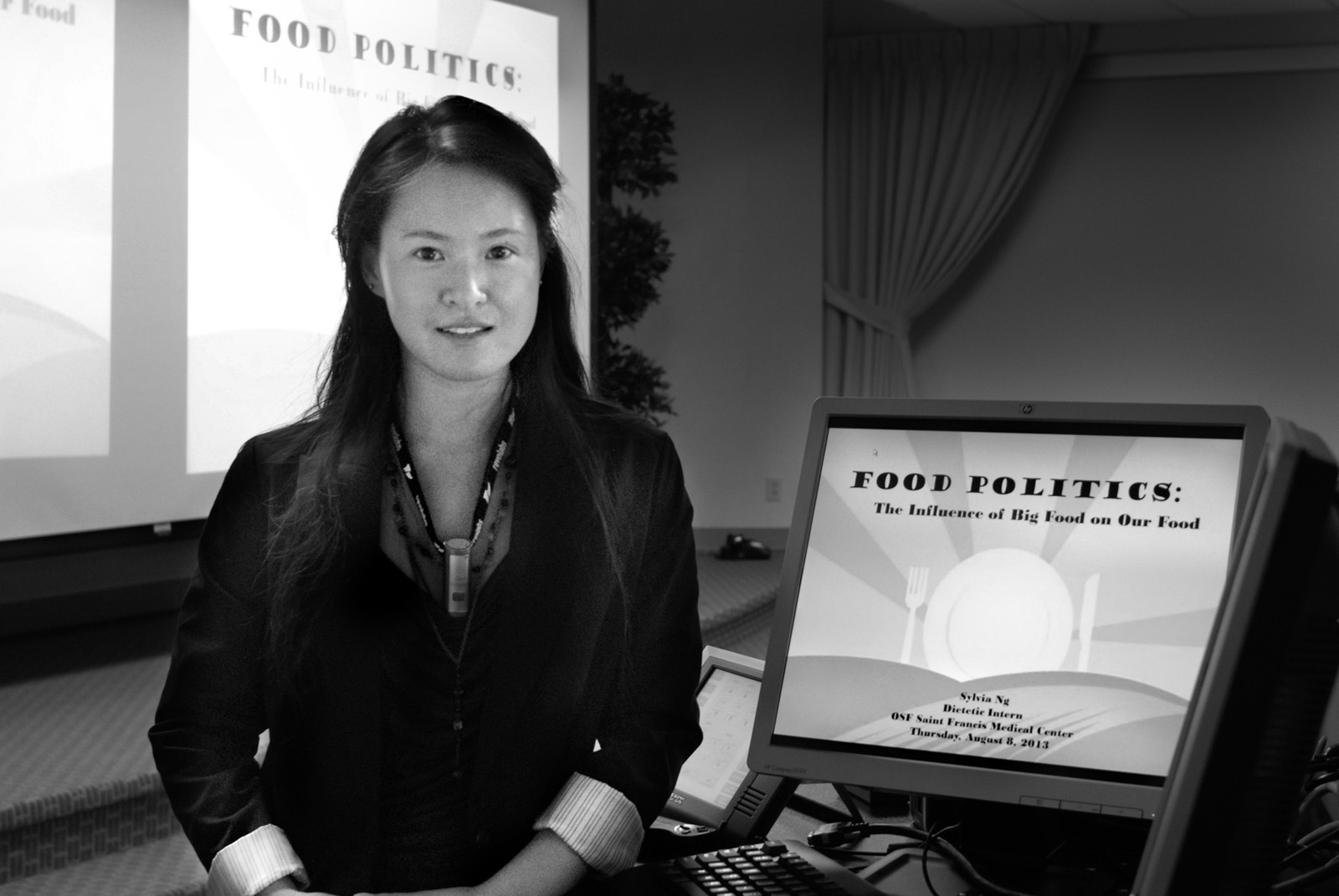
Do you feel outraged to live in a country that allows toxins to be marketed to children as food? Do you feel angry that the government allows corporate profit to trump truth?
Take these examples:
· “Zero trans fat”: Misleading and may be false. The government allows a food label to state “zero trans fat” when the amount is less than 0.5 grams per serving, however, if a serving is four potato chips and you eat 10 chips, you’ve consumed a considerable amount of trans fat. Dr. Walter Willett, Harvard School of Public Health, said trans fat is a toxin, and no level, no matter how small, is safe to consume.
· “Pork . . . the other white meat”: False. Pork is still classified as a red meat and consumption should be limited.
· “Made with whole grains”: Misleading. Can mean a product contains a small percent of whole grains. Look for “100 percent whole grains.”
· “Contains antioxidants” and “high in fiber”: Misleading. Junk food is junk food whether or not it has added antioxidants or fiber.
Understanding the difference between corporate marketing and sound nutritional information is at the heart of America’s epidemics of obesity, diabetes, cardiac disease, high cholesterol and cancer. It inflates skyrocketing medical costs. It’s the basis of high levels of malnutrition.
Some of the differences between the marketing and the science were highlighted recently by Sylvia Ng, a dietary intern at OSF Saint Francis Medical Center, who presented “Food Politics: The Influence of Big Food on Our Food” at a luncheon lecture held recently at the hospital.
Ng, a classically trained pastry chef from New York City, will complete her studies at OSF in late summer and hopes to work with low income populations fighting hunger and helping to shape Congressional food initiatives.
She called the disparity between marketing and sound science “a little discouraging but also motivating. You see the ethical dilemma.”
She said corporations have no morals and no emotions. Their primary objective is to increase profits. Corporations evaluate all business decisions in terms of growth and profit. They collude to fix prices. They operate a revolving door between the ranks of their own executives and positions in governmental regulatory agencies. Former executives with big food corporations maintain their loyalties to the corporation even when they are in government regulatory positions.
There is no corporate profit when people cook oatmeal for breakfast. Profit comes from eating processed breakfast cereals, pop tarts and breakfast bars.
Big food imposes its profit motivation even on the U.S. Department of Agriculture food pyramid, now restructured as a food plate.
“How did dairy become part of an essential diet?” Ng asked, noting that nutritionists are forced to collaborate with the dairy industry that has a check-off program to market dairy.
Want to see “Big Food” in politics and public policy? Ng suggests you look no further than the farm bill, dietary recommendations, research, food safety, food labeling, food marketing and school nutrition programs.
She pointed out that $1 of every $3 spent on groceries in the United States is spent at Walmart, a corporation that is anti-union, contracts with overseas companies and pushes cost-cutting.
Standing up against corporate misinformation are organizations like Physicians Committee for Responsible Medicine that sued Pepsi over its Naked Juice brand that contains chemical additives.
As the nation fights epidemic rates of obesity and diabetes, big food corporations have pushed “super sized” portions. The average caloric consumption of Americans increased from 3,200 in 1980 to 3,700 in 2000. (One in four adults and one in three children now eat fast food every day. Two-thirds of American adults are obese or overweight, and children today are growing up in a culture of obesity . . . so the epidemic is yet to peak.)
Fighting the obesity trend are states and cities that try to eliminate soda and junk food from eligibility for food stamps (now called the Supplemental Nutrition Assistance Program). Major food corporations are usually successful in limiting restrictions. They want universal access to soda and junk food because of the high profit margins.
“Big food wants cheaper food with higher profits,” Ng said, noting the obese population is also a malnourished segment of the population.
She pointed out that Registered Dietitians must act in their clients’ best interests, even in the face of corporations that promote profit above all else. However, some of the required in-service training dietitians take is sponsored by corporations.
Ng said she is more aware that some of the professional organizations she belongs to accept corporate donations and sponsorships.
Moving from New York City to Peoria resulted in changes in Ng’s diet. In New York, she had ready access to green markets with fruit and vegetable stands. In Peoria, she began eating the typical American diet. As a result, she said, she has gained weight and seen changes in her skin and hair. She is often fatigued and for the first time in her life has sinus problems . . . all factors that can at least partially be attributed to diet.
Ng volunteers on Saturday mornings at Peoria Riverfront Market to help process the LINK card for food stamp recipients to double their spending when they purchase fresh local produce. (Funds for double value come from the Wholesome Food Fund, Community Foundation of Central Illinois, 331 Fulton St., Suite 310, Peoria, IL 61602.)
Another change in Ng after moving to Peoria and spending a year working with Golda Ewalt, director of the dietetic internship program at OSF:
Ng said she used to simply renew her membership in professional organizations. Now she renews and let’s them know what she thinks about their close ties to industry.

Recent Comments